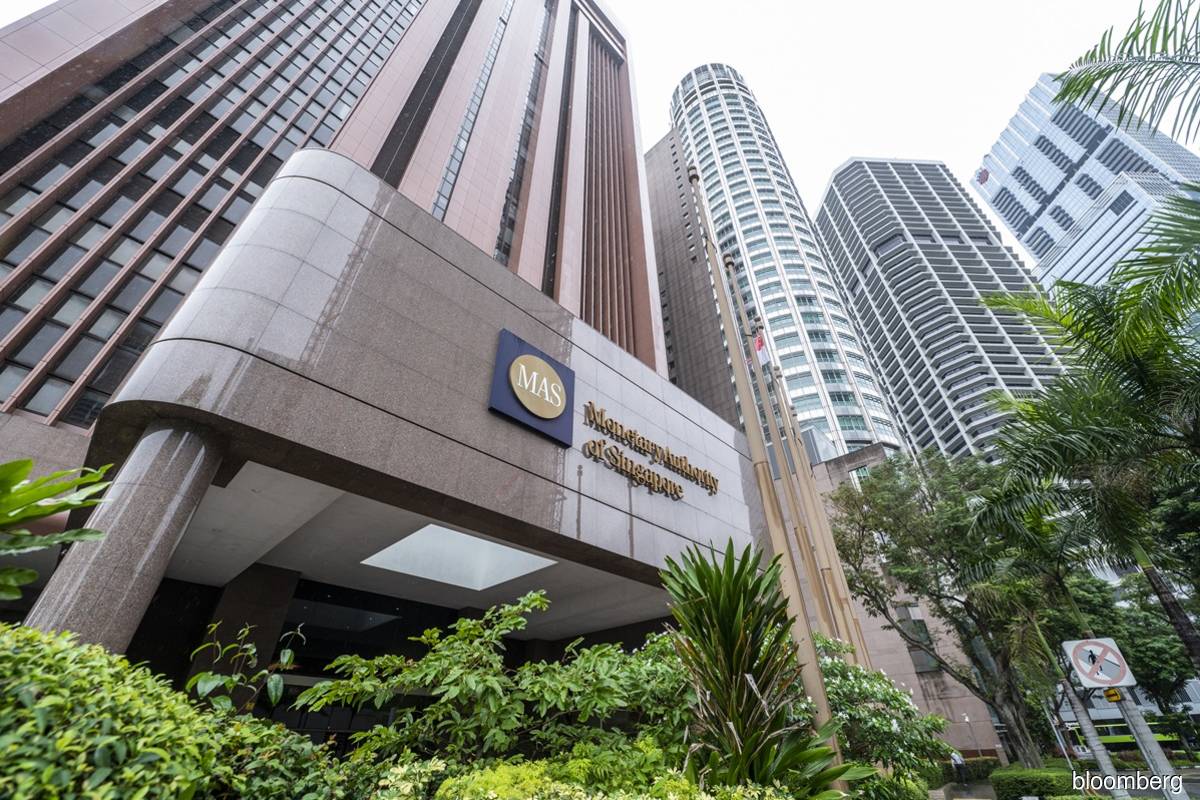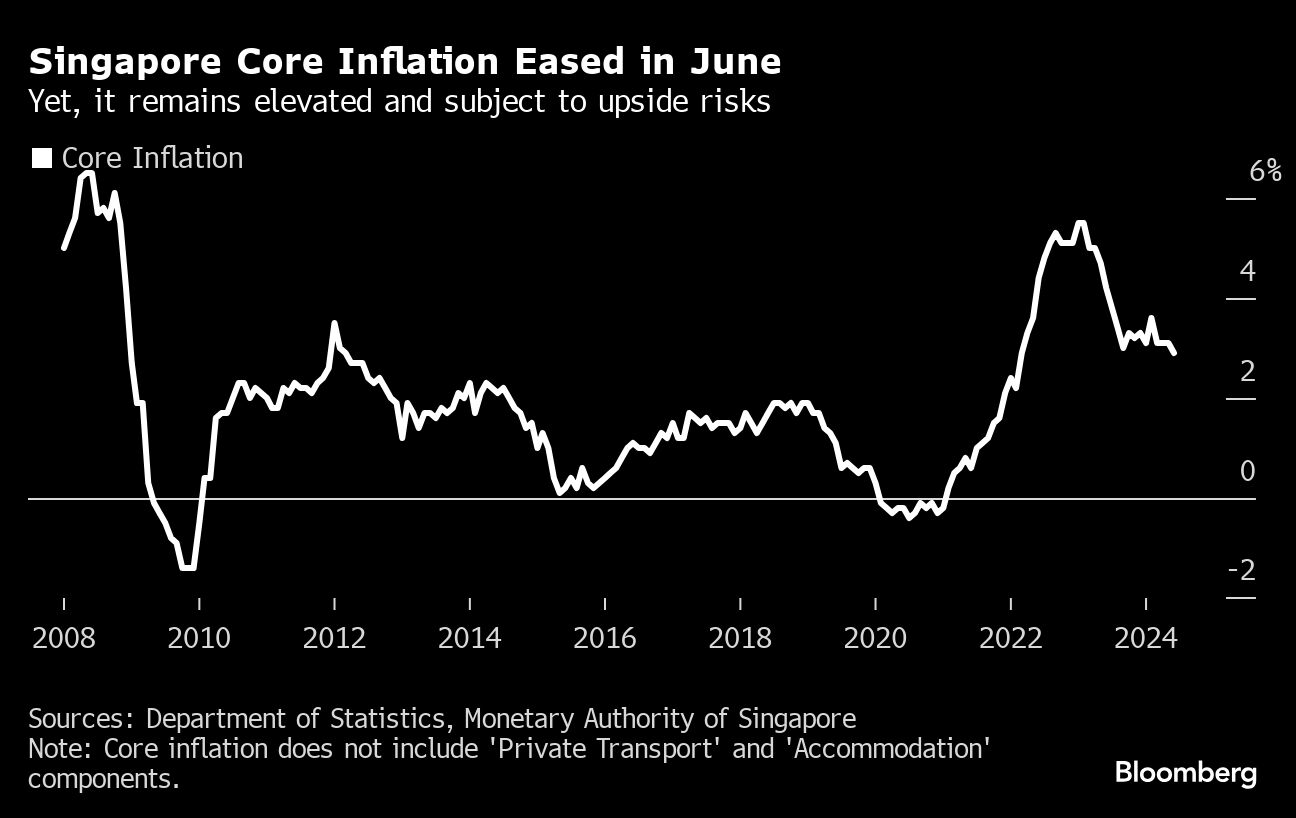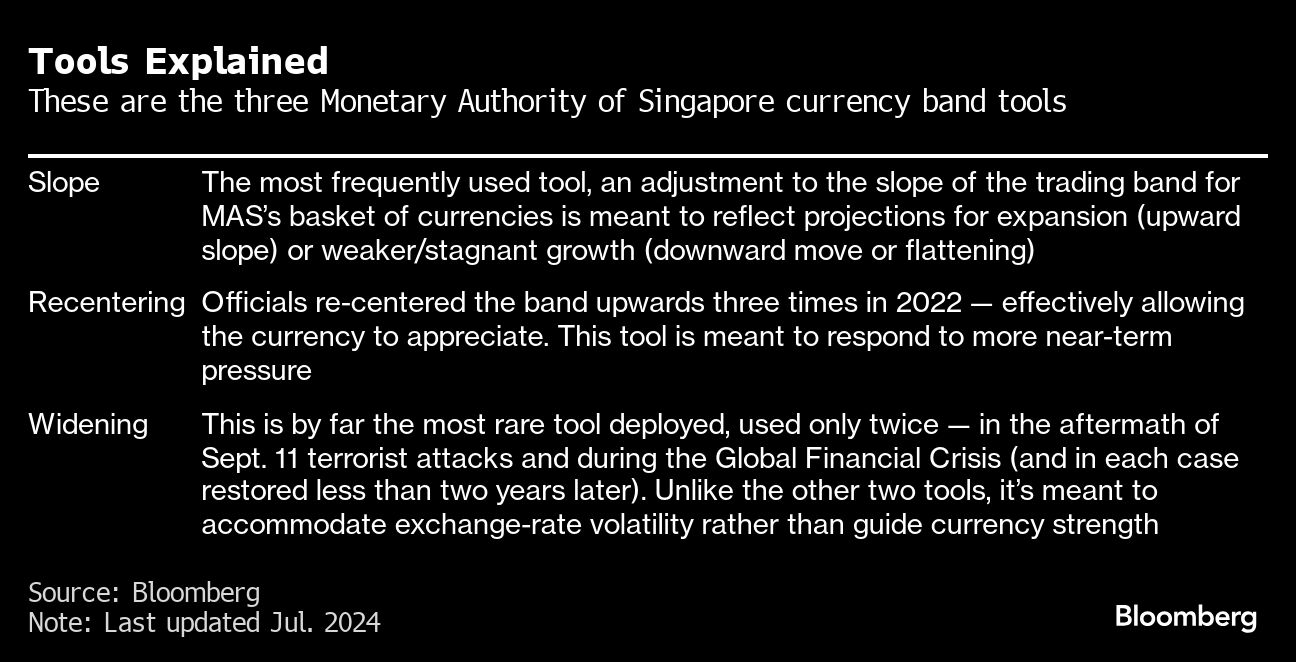Singapore Seen Holding Monetary Policy, Easing Eyed in 2025
edgeinvest
Publish date: Fri, 26 Jul 2024, 10:12 AM

(July 25): Singapore’s central bank will likely maintain tight monetary policy settings, while signalling an extended pause to help blunt imported inflation, amid lingering risks from geopolitical shocks.
Eighteen of 19 economists surveyed by Bloomberg forecast the Monetary Authority of Singapore (MAS), which uses the exchange rate rather than interest rates to stabilise prices, will keep its overall policy settings unchanged on Friday. DBS Group Holdings Ltd was alone in predicting a slight easing to the slope in the policy band of Singapore dollar’s nominal effective exchange rate, or S$NEER.
The tone of MAS’ statement will likely remain hawkish at the third of its four-times-a-year decision, according to nine of 11 economists who responded to the question. Although the MAS pre-empted the Federal Reserve in tightening policy post-pandemic, the authority is likely to follow its US peer on the easing cycle, all nine economists who answered the question said.
Singapore’s monetary authority tightened policy settings five times since October 2021, before opting to pause from 2023. After its last decision in April, data showed Singapore’s economic recovery has gained momentum, while core inflation eased in June, after holding at the same level for three straight months.
“The progress on disinflation is somewhat latent,” said Jester Koh, an economist at United Overseas Bank Ltd. “Recent pickup in imported and external inflation warrants close monitoring, and it may be more prudent for MAS to maintain the prevailing restrictive slope settings for a tad longer.”
The MAS said it expects core inflation to reach around 2% in 2025, while forecasting growth “will come in closer to its potential rate of 2%-3%” this year. Latest forecasts on inflation, as well as growth, will be available on Friday.
The MAS doesn’t have an explicit inflation target, though it has concluded that a core inflation rate of just under 2% on average “is consistent with overall price stability in the economy”.
The latest inflation report for June showed the core gauge — which excludes costs of accommodation and private transport — came in at 2.9% in June, from a year ago, the lowest since March 2022.
What Bloomberg Economics says...
“We expect the broad disinflation trend to continue, as external and domestic demand-pull price pressures ease. This should give the central bank greater scope to loosen policy settings next year.” — Tamara Mast Henderson, economist.
One supporting factor for the MAS is a gradual strengthening of the Singapore dollar’s trade-weighted exchange rate. The odds are growing for Singapore’s dollar to be Asia’s best-performing currency for a third straight year.
Keeping the appreciating path of the local dollar has helped the Singapore dollar strengthen by about 1.2% since the April policy decision, and offset imported inflation.
While the near-term view is supported by resilient global growth and slowing price gains, the outlook from next year is unclear. Rising tensions in the Middle East and Europe, and uncertainty around when the Fed will start cutting rates, carry implications for Singapore’s economic rebound, as well as price outlook.
Bank of America’s Kai Wei Ang sees a “small risk” of tightening early next year, if core inflation is “seen decisively above 2% in 2025 and beyond”.
“Such risk would be more evident by the April 2025 meeting,” said Ang, who doesn’t rule out the possibility of a hike in January, should core inflation remain sticky in the final quarter of this year, and external demand recovery advances far stronger than expected.
What else to watch out for in the MAS statement:
- Economists expect core inflation this year to hover at 3%, before easing to 1.95% next year;
- Current slope of the currency band was seen at 1.5%, according to the median of 10 respondents;
- Majority of economists expect the MAS to retain policy settings this year and only begin easing after the Fed embarks on a rate-cut path.
Uploaded by Liza Shireen Koshy
Source: TheEdge - 26 Jul 2024
More articles on CEO Morning Brief
Created by edgeinvest | Jul 26, 2024
Created by edgeinvest | Jul 26, 2024
Created by edgeinvest | Jul 26, 2024
Created by edgeinvest | Jul 26, 2024
Created by edgeinvest | Jul 26, 2024
Created by edgeinvest | Jul 26, 2024
Created by edgeinvest | Jul 26, 2024




















